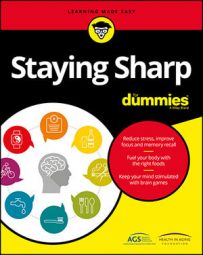To put the peg system into action, try the following brain workout. The goal is to remember a list of ten words, in order. Sound hard? Don't worry, here's a hint: The pegs for remembering the words are the numbers one through ten.
The words you need to recall appear in the following list. Slowly read through the list just one time, and, as you do, attach a number to each word, beginning with one:
- Sun
- Due
- Sea
- Door
- Hive
- Stick
- Heaven
- Gate
- Tine
- Hen
This example uses phonetic or rhyming mnemonics. The rhyming words (one sun, two due) enable you to remember the list in order of the increasing numbers by looking at their sounds (phonetics) and rhyming with the numbers.
This is a simple example, but you get the point: Peg words attach easily to the words you want to remember. Making the peg word rhyme with the target word makes this technique easy to use. For example, in "eight gate," the sound of the word gate gives you the clue you need.You can also use alphabet pegs to tie letters to words. The letter of the alphabet can be either a rhyme or just contain the letter within it. For example:
| A-acorn | B-bee |
| C-sea | D-dog |
| E-eel | F-frog |
| G-goat | H-hut |
| I-eye | J-jay |
| K-cake | L-elf |
| M-mate | N-nut |
| O-oh | P-pea |
| Q-cue | R-ray |
| S-star | T-tea |
| U-umbrella | V-volt |
| W-wheel | X-axe |
| Y-why | Z-zebra |

